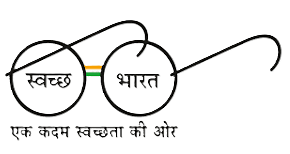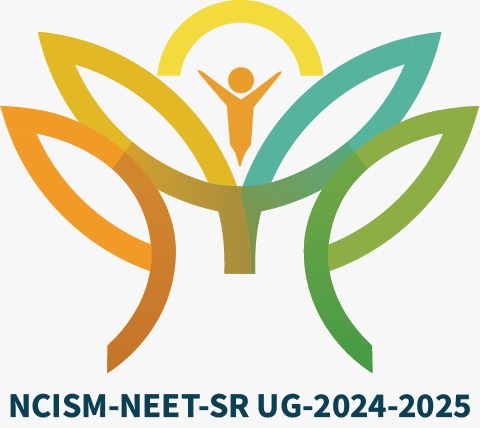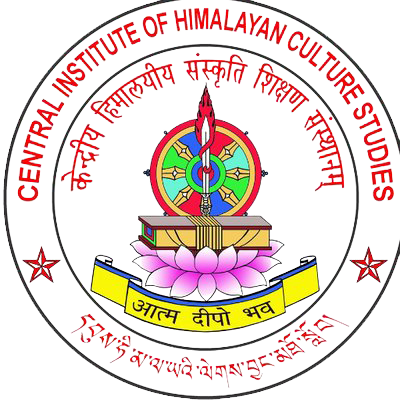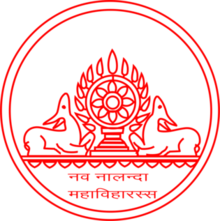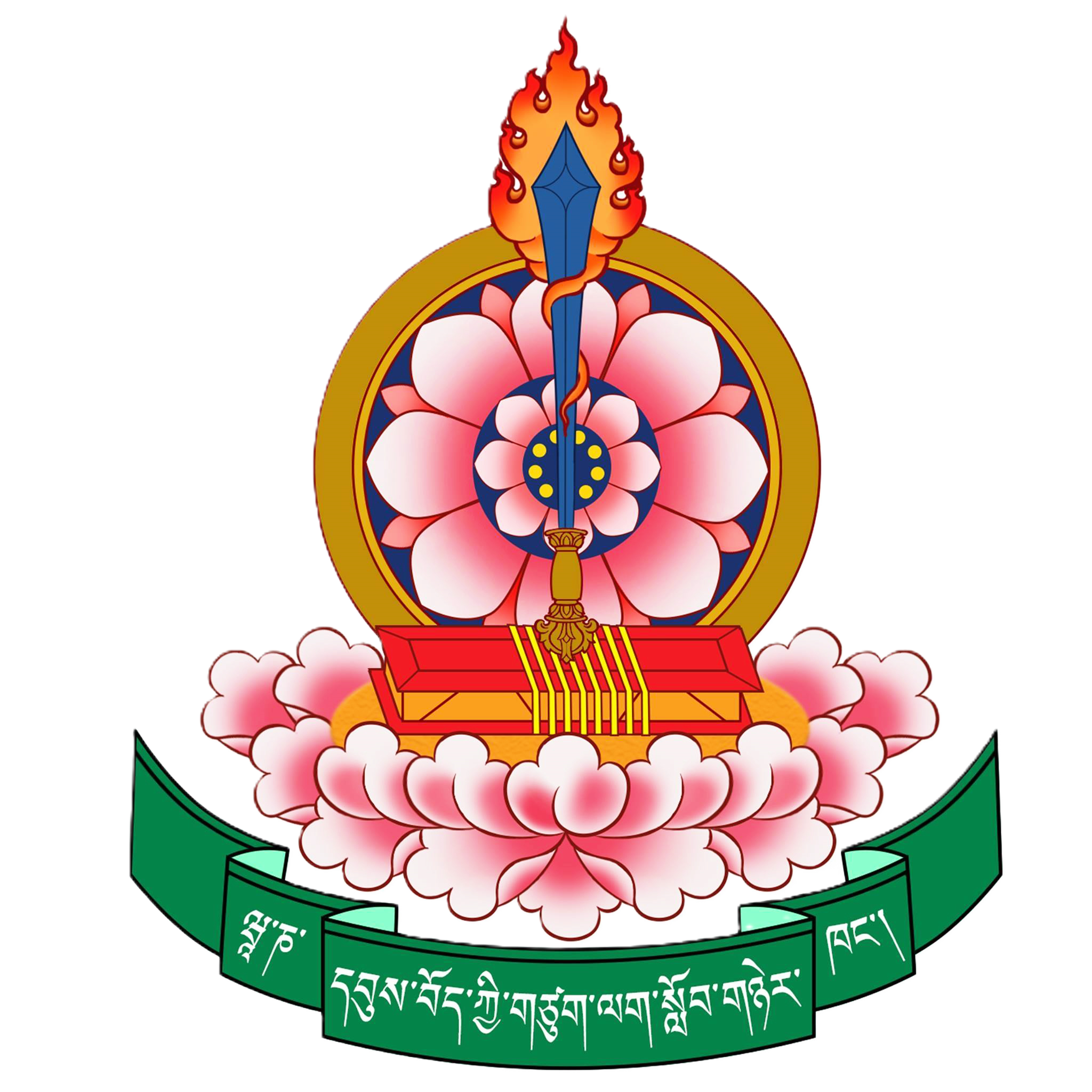TESTIMONIALS
NOTICE BOARD
TESTIMONIALS

In the meantime, two generations of Tibetan and Indian scholars at CIHTS have worked together on literary research resulting in significant publications in Tibetan, Sanskrit, and Hindi. Many of these books concern writing of the scholars of the glorious Nalanda Tradition. These works of wisdom involve more than philosophical speculation, they are of practical relevance today. If people become more aware of the way the mind works, they will come to understand how inner development that involves caring for others’ welfare brings about lasting happiness. Starting as a constituent wing of the Sampurnananda Sanskrit University, the Institute has grown to the point that it has been recognized as an autonomous centre of higher learning in its own right—a great achievement. May its future be similarly fruitful.
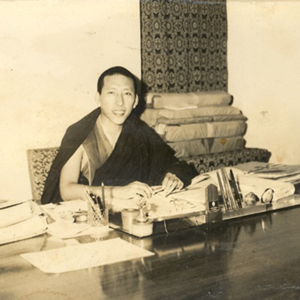
The uniqueness of this Institute is that the entire ancient Indian Buddhist traditions preserved in Tibet for more than thousand years in four major schools as well as the tradition of Bon, the pre-Buddhist wisdom of Tibet, are placed in one centre of learning. The Institute has developed skillfully the holistic curriculum and courses in which all the modern methods of teaching, learning and research are included without disturbing the traditional methods of teaching, learning and research. During the last five decades, the Institute has achieved immeasurable success in all these objectives, much more than the expectations of its founders. All these achievements were due to the guidance and cooperation of numerous Indian scholars and generous financial and administrative support of Government of India. I cannot mention the names of all the important collaborators in this endeavour. But I cannot resist remembering and mentioning the name of late Prof. Jagannath Upadhyaya and Dr. Mrs. Kapila Vatsayayan among many others, who worked tirelessly and skillfully to bring His Holiness the Dalai Lama's vision into reality.
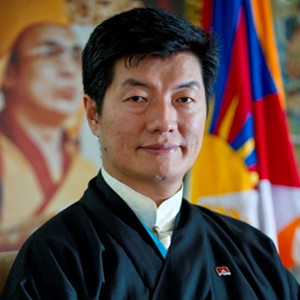
50 years have passed since His Holiness the Dalai Lama and the then Prime Minister Jawaharlal Nehru founded the Institute in 1967 with the prime purpose of preserving and promoting the unique language, religion and culture of Tibet, also shared by Tibet's neighboring Himalayan communities. Over the years, the Institute became an important centre of higher learning in Tibetan language, the four major schools of Tibetan Buddhism and Bon. The Institute not only expanded in its school grounds but also in its student body by including students from various countries. It is commendable that the Institute, as was its mission from the start, have among its alumni, notable scholars in Tibetan language and culture, actively serving the preservation and promotion of Tibet's unique language, religion and culture. I hope that the Institute will make effort in the revival of the Nalanda tradition in India.
Central Tibetan Administration
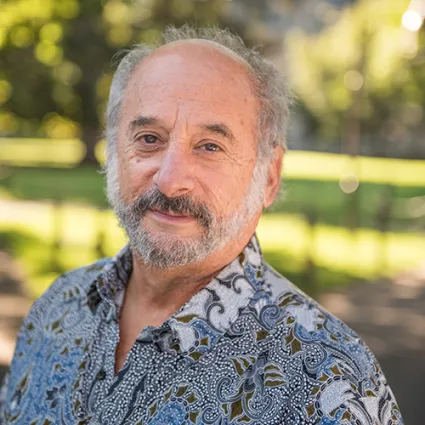
“We are now the oldest academic exchange linking the Tibetan academic community to Western institutions. During this time over 400 American and Australian students have studied at CIHTS, and over two - dozen Tibetan students have earned degrees in American and Australian universities.” A great university looks outward, and establishes collaborative links with the global academic community, integrating its teaching and research with international organizations and networks of scholars. What is now the Five College Tibetan Studies in India Program, joined with the University of Tasmania Buddhist Studies in India Program and the Deakin University Buddhist Studies in India Program has grown substantially in scope, and has enjoyed enormous success. At 26 years, we are now the oldest academic exchange linking the Tibetan academic community to Western institutions. During this time over 400 American and Australian students have studied at CIHTS, and over two-dozen Tibetan students have earned degrees in American and Australian universities. Lives have been dramatically changed on both sides. The friendships that have formed have often proven lasting, and have been an effective vehicle for building intercultural understanding. The exchange program has grown beyond its initial vision as a curricular exchange, and has become a vehicle for extensive joint research enabling the completion of major research projects that would have been impossible for either the Tibetan or the Western partners to complete on their own. It would be hard to overstate the impact of this program on CIHTS, or the ways in which this program has facilitated the impact CIHTS has had on students, on its own faculty and on the scholarly world. As CIHTS grows in international stature, its connections to the larger scholarly world will inevitably grow. The success of this exchange augurs well for that future.
Professor of Philosophy, Logic and Buddhist Studies, Smith College, USA

“CIHTS has set the gold standard for higher education and research in the Fields of Tibetan culture, religion, philosophy, and mind science. By providing instruction based not only on original Tibetan literature but also Sanskrit, Pā li, and other Indic languages , it firmly established Tibetan Buddhism in the fertile soil of the Nalanda tradition.” Since its founding, CIHTS has set the gold standard for higher education and research in the fields of Tibetan culture, religion, philosophy, and mind science. By providing instruction based not only on original Tibetan literature but also Sanskrit, Pāli, and other Indic languages, it firmly established Tibetan Buddhism in the fertile soil of the Nalanda tradition. Many conferences on Buddhism and science over the past thirty years have highlighted areas of common ground between these two traditions, where collaboration is feasible. CIHTS has openly dealt with crucial areas not only of collaboration but also confrontation between the Buddhist and scientific traditions. Specifically, it has critiqued the metaphysical beliefs of scientific materialism, which are widely mistaken for scientific truths and which are fundamentally incompatible with all schools of Buddhism. Only when both the commonalities and the differences between Buddhism and science are clearly acknowledged and both traditions are respected for their respective discoveries, especially regarding the mind, can these two traditions of empirical and rational inquiry fully enrich each other.
President, Santa Barbara Institute for Consciousness Studies

“From a small group of students led by Professor Samdhong Rinpoche, to a government - funded institute for Tibetan Studies, to a university with several faculties and a successful record of graduating students, CIHTS has pioneered the study of Tibetan religion, philosophy, and culture in India and has provided an excellent environment for research and collaboration for a generation of scholars from around the world.” I first stayed at CIHTS in 1988 during my graduate fieldwork. It was already a vibrant center for Buddhist Studies, and in the years since then it's expanded and improved. From a small group of students led by Professor Samdhong Rinpoche, to a government-funded institute for Tibetan Studies, to a university with several faculties and a successful record of graduating students, CIHTS has pioneered the study of Tibetan religion, philosophy, and culture in India and has provided an excellent environment for research and collaboration for a generation of scholars from around the world. I first came to CUTS in 1988 as a Ph.D. student at University of Virginia and spent five months working with Ven. Geshe Yeshe Thapke on commentaries on the Samdhinirmocana-sutra. It was one of the most memorable times of my professional life, and I'm deeply grateful for the opportunity to study with such an eminent scholar. For the past three years, I've been involved in a project funded by the Australian Research Council focused on Daktsang Lotsawa's "eighteen great contradictions," which sparked a debate with some of the greatest minds of the Geluk school. Its implications continue to resonate today, and it has significant implications for how to understand the two truths. My institution, Deakin University in Australia, has a linkage with CIHTS, and several CIHTS staff are members of the research team: Geshe Thabke, Khenpo Tashi Tsering, and Dr Lobsang Dorjee Rabling. Professor Jay Garfield (Smith College/Harvard University), Dr Sonam Thakchoe (University of Tasmania), Dr Douglas Duckworth (Temple University), Dr Thomas Doctor (Rangjung Yeshe Institute), and Professor José Cabezon (University of California Santa Barbara) are also members of the team. We meet annually at CIHTS to discuss translation and interpretation issues, and we deeply appreciate the help we've received from CIHTS staff, particularly Professor Lobsang Norbu Shastri and Professor Geshe Ngawang Samten. CIHTS resources for Tibetan Buddhist philosophy are outstanding, and the University provides an excellent venue for study and analysis of Buddhist texts.
Research Professor , Deakin University , Australia
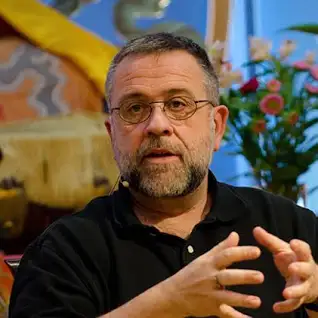
“Tibetan cultural sciences including medicine, grammar and poetics, and history. CIHTS’ productive professoriate and research staff have made important contributions to many aspects of Tibetan and Buddhist Studies, and its alumni occupy important positions in India and abroad.” From its founding fifty years ago, CIHTS has been an important international centre for the study of Tibetan Buddhism. Over the past two decades it has evolved to also become a world-renowned institution for the study of all of the Tibetan cultural sciences including medicine, grammar and poetics, and history. CIHTS’ productive professoriate and research staff have made important contributions to many aspects of Tibetan and Buddhist Studies, and its alumni occupy important positions in India and abroad. I studied under eminent CIHTS professors more than three decades ago when I was a graduate student. Their selfless guidance was indispensable to the completion of my dissertation research. Today, I collaborate with CIHTS faculty on a variety of research projects, and on more than one occasion have had the honour to lecture to its students and staff. On the occasion of the fiftieth anniversary of the founding of the university, I give thanks for CIHTS' service to the academy, pray for it's continued success, and send felicitations and all good wishes to it's administration, faculty, students, and staff. I also wish to express my thanks to the government of India, whose consistent support for CIHTS has been essential to its success, growth, and rise to a position of international eminence.
Professor of Tibetan Buddhism and Cultural Studies University of California, Santa Barbara , USA
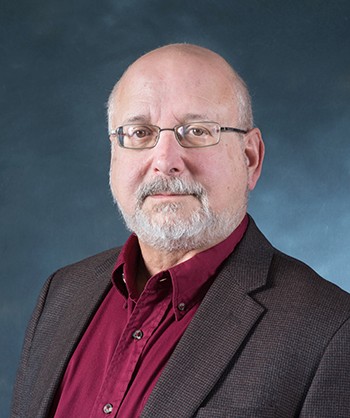
“My time at CIHTS has continued to inspire and inform all my work ever since -- in academic Buddhist studies, comparative theology and religion, and in exploring ways of adapting Buddhist practices of compassion for secular and interfaith contexts. I am grateful for all that was offered to me at CIHTS.” I spent time at CIHTS in Sarnath in 1986 and 1987, doing doctoral research on diverse Indian and Tibetan Buddhist understandings of Buddhahood. Upon my arrival, Samdhong Rinpoche kindly met with me as academic advisor, and that first conversation informed much of what I have worked on ever since. Rinpoche recommended I study with Khenpos of several different Tibetan Buddhist traditions, to appreciate and learn from the diversity of perspectives, disciplines and remarkable scholars that are a great strength of CIHTS. I followed Rinpoche's advice, studying with Geshe Thubten Tsering and Geshe Yeshe Tabkye of the Gelug school, Khenpo Migmar Tsering of the Sakya school, and Khenpo Rigdzin of the Nyingma school, each of whom were brilliant exemplars and embodiments of their traditions. I was astounded at the ways differing Tibetan perspectives on enlightenment highlighted different threads of thought and practice from Indian Buddhism, informing complementary systems of profoundly transformative spiritual practice. My time at CIHTS has continued to inspire and inform all my work ever since--in academic Buddhist studies, comparative theology and religion, and in exploring ways of adapting Buddhist practices of compassion for secular and interfaith contexts. I am grateful for all that was offered to me at CIHTS.
Professor of Buddhism and Comparative Theology Boston College, USA
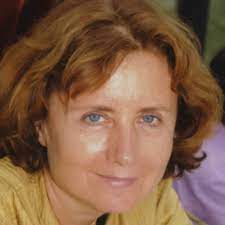
“In comparison with the system of Western education, this system relies more on the development of memory and the internalization of knowledge, and the transformation of knowledge into a part of personal experience.” On the occasion of CIHTS’ Golden Jubilee, I would like to express my deep gratitude to this respected institution and to its Vice Chancellor, Professor Geshe Ngawang Samten, a renowned scholar of Buddhist and Tibetan studies, for the support of my research projects in the field of Buddhist epistemology and translation of Sanskrit Buddhist epistemological texts into Russian. From my very first visit, I got a very warm reception and help from Prof. Geshe Ngawang Samten, his Secretariat, Institute Staff and Professors. I am deeply impressed by the tremendous work that is carried out at the Institute on the restoration of Sanskrit texts on the basis of Tibetan translations, on critical editions in Sanskrit and Tibetan, as well as translations from Sanskrit to Tibetan, and translations into modern languages English and Hindi. This huge work of a magnificent team of experts led to the creation of an impressive library of publications of a great value for modern academic research. I was very impressed with the teaching system, which included the students' familiarization with the achievements of modern sciences, the discipline of students, and their great desire for knowledge. In comparison with the system of Western education, this system relies more on the development of memory and the internalization of knowledge, and the transformation of knowledge into a part of personal experience. Its success in the field of education, the University, of course, owes to its Vice Chancellor Prof. Geshe Ngawang Samten, one of the most influential and open-minded modern Tibetan scholars, who supports the reform of the Buddhist education system undertaken by His Holiness the Dalai Lama. I must say that I always felt in CUTS like at home, surrounded by friends and just very sympathetic people, creating a calm and peaceful atmosphere around them. The campus is filled with an atmosphere of complete absorption in the learning process. From my window, I often watched the young students roaming back and forth while memorizing texts. For me, this university is a real oasis of learning. I wish CIHTS much prosperity and further success in the fields of research and education.
Professor, Russian Academy of Sciences, Moscow , Russia

"CIHTS remains a wonderfully unique liberal arts institution learning institution striving to provide depth in the study of Tibetan Buddhist philosophy and culture. Many great teachers and translators have emerged from here as a gift to the world. My personal studies at CIHTS were primarily with Most Venerable Samdhong Rinpoche who instilled in me the importance of ethics in education and in life in general. One of the pilots of the leadership program designed by The Dalai Lama Center for Ethics and Transformative Values was launched at CIHTS in 2010. Since then 160+ students have gone through this program and have developed various humanitarian and leadership projects either at CIHTS or their native communities. Our faculty is proud of the student and faculty engagement there, and we look forward to continuing this partnership. I congratulate the founders and the leadership for this visionary place and hope that its next 50 years will continue to provide a vibrant learning community and campus."
President & CEO, The Dalai Lama Center for Ethics and Transformative Values at MIT

"CIHTS made me who I am today, gave me the critical faculties to understand, appreciate and value the rich Indo-Tibetan Buddhist philosophical heritage, nurtured me with all the formal academic skills through its rigorous training programs. I acquired much of my professional skills, philosophical, philological, historical, and linguistic skills all of which furnished me with a unique set of abilities to bring my teaching and research projects into productive dialogue with the Western colleagues. The benefits I have received from CIHTS’ countless academic initiatives, educational programs and international cultural and academic exchanges during my nine-years of academic life are profound and too many to recount here. Suffice it to say, have many reasons to rejoice in the depth of my professional connection with CIHTS, and owe a debt of gratitude to this institution for the contributions it has directly brought into my life as I reflect on its achievements celebrating its Golden Jubilee."
Senior Lecturer, Asian Philosophy University of Tasmania, Australia
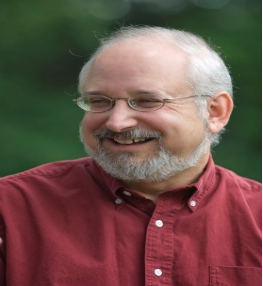
“My time at CIHTS has continued to inspire and inform all my work ever since--in academic Buddhist studies, comparative theology and religion, and in exploring ways of adapting Buddhist practices of compassion for secular and interfaith contexts. I am grateful for all that was offered to me at CIHTS.” I spent time at CIHTS in Sarnath in 1986 and 1987, doing doctoral research on diverse Indian and Tibetan Buddhist understandings of Buddhahood. Upon my arrival, Samdhong Rinpoche kindly met with me as academic advisor, and that first conversation informed much of what I have worked on ever since. Rinpoche recommended I study with Khenpos of several different Tibetan Buddhist traditions, to appreciate and learn from the diversity of perspectives, disciplines and remarkable scholars that are a great strength of CIHTS. I followed Rinpoche's advice, studying with Geshe Thubten Tsering and Geshe Yeshe Tabkye of the Gelug school, Khenpo Migmar Tsering of the Sakya school, and Khenpo Rigdzin of the Nyingma school, each of whom were brilliant exemplars and embodiments of their traditions. I was astounded at the ways differing Tibetan perspectives on enlightenment highlighted different threads of thought and practice from Indian Buddhism, informing complementary systems of profoundly transformative spiritual practice. My time at CIHTS has continued to inspire and inform all my work ever since--in academic Buddhist studies, comparative theology and religion, and in exploring ways of adapting Buddhist practices of compassion for secular and interfaith contexts. I am grateful for all that was offered to me at CIHTS.
Professor of Buddhism and Comparative Theology Boston College, USA

"Congratulations on the Golden Jubilee of the Central Institute of Higher Tibetan Studies. Everyone working and studying there is to be greatly congratulated on keeping this wonderful institution so active in the perpetuation of Tibetan learning and scholarship. I still haven’t had the fortune to visit in all these years, but my karma has at least allowed me to meet and work with Vice Chancellor Prof. Geshe Ngawang Samten on several occasions in the United States. I hope to continue a translation we began together on an early modern autobiography and see it published one day. Thank you to Geshe-la and everyone else at CIHTS and congratulations once more!" I spent time at CIHTS in Sarnath in 1986 and 1987, doing doctoral research on diverse Indian and Tibetan Buddhist understandings of Buddhahood. Upon my arrival, Samdhong Rinpoche kindly met with me as academic advisor, and that first conversation informed much of what I have worked on ever since. Rinpoche recommended I study with Khenpos of several different Tibetan Buddhist traditions, to appreciate and learn from the diversity of perspectives, disciplines and remarkable scholars that are a great strength of CIHTS. I followed Rinpoche's advice, studying with Geshe Thubten Tsering and Geshe Yeshe Tabkye of the Gelug school, Khenpo Migmar Tsering of the Sakya school, and Khenpo Rigdzin of the Nyingma school, each of whom were brilliant exemplars and embodiments of their traditions. I was astounded at the ways differing Tibetan perspectives on enlightenment highlighted different threads of thought and practice from Indian Buddhism, informing complementary systems of profoundly transformative spiritual practice. My time at CIHTS has continued to inspire and inform all my work ever since--in academic Buddhist studies, comparative theology and religion, and in exploring ways of adapting Buddhist practices of compassion for secular and interfaith contexts. I am grateful for all that was offered to me at CIHTS.
Hershey Professor of Buddhist Studies





